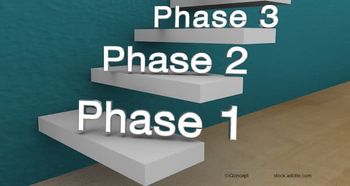
Good vision, minimal disturbances achieved with presbyopia IOL
84% of the patients who received a hybrid, acrylic IOL with a continuous transitional focus (CTF) optic to correct presbyopia were within 0.5 D of emmetropia.
Reviewed by Dr Mike P. Holzer.
Bilateral implantation of the Precizon Presbyopic NVA Multifocal IOL (Ophtec) provides “satisfying” uncorrected vision at all distances for patients undergoing cataract surgery or clear lens extraction, according to Dr Mike P. Holzer, an ophthalmologist in private practice in Weinheim, Germany.
The company describes this technology as a hybrid, acrylic IOL with a continuous transitional focus (CTF) optic to correct presbyopia, which according to Dr Holzer is a key feature of this IOL. CTF provides seamless transition from one distance to another. The lens is not currently approved by the FDA.
The lens is available in powers ranging from +1.0 to +35.0 D in 0.5-D increments, with an add-on power of +2.75 D. The lens was evaluated in a multicentre, prospective, open-label, single-arm clinical trial (NCT02409771) that looked at the base 10 logarithm of the minimum angle of resolution (logMAR) corrected and uncorrected visual acuity (VA) scores at distance, intermediate, and near; the manifest refraction spherical equivalent; and the defocus curve. Fifty-nine patients were included in the study. All patients in the study underwent bilateral implantation of the IOL.
The results showed that 84% of the patients were within 0.5 D of emmetropia. The investigators observed a slight hyperopic shift. Therefore the constants for the IOL calculation were adjusted. The mean bilateral uncorrected VAs were 0.0 for distance, 0.14 for intermediate, and near 0.2 for near logMAR.
When asked about visual disturbances, most of the patients reported never or almost never having glare or halos. When these visual disturbances did occur, patients reported that they were not bothersome.
“All surgeries for implantation of the IOL were uneventful. The IOL provided very good [VAs] at all distances from far to near. Low percentages of halo and glare occurred. The Precizon Presbyopic IOL implantation is an effective method to provide good [VA] at all distances in presbyopic and cataract patients,” Dr Holzer concluded.
Mike P. Holzer, MD
E: [email protected]
This article is adapted from Dr Holzer’s presentation at the 2022 American Society of Cataract and Refractive Surgery’s Annual Meeting in Washington, DC. The study he presented was supported by Ophtec BV, Groningen, the Netherlands.
Newsletter
Get the essential updates shaping the future of pharma manufacturing and compliance—subscribe today to Pharmaceutical Technology and never miss a breakthrough.










































